In the fast-changing realms of Pro AV and data networking, there has never been a stronger need for fast, dependable, efficient network infrastructure. SFP28 switches, which include 25gb SFP28 transceivers, are becoming key elements in modern network architecture as bandwidth requirement increases and data transmission speed becomes faster. This article is designed to be an all-inclusive guide on 25G SFP28 Managed Switches, focusing on their significance in professional audiovisual (Pro AV) setups and Cisco networks. We will explore the technical specifications, benefits, and applications of SFP28 technology, thereby providing insight into how these switches can improve network performance and reliability. By the time you are done reading this piece of writing, you should have a good comprehension of what these devices can do in Pro AV environments or even advanced networking situations.
What is an SFP28 Switch?

Understanding sfp28 Technology
Based on the 25 Gbps SFP transceiver module, Small Form-Factor Pluggable 28 (SFP28) is an advanced version. The latest editions can go up to 100g. It has been designed for higher data rates and supports 25Gbps per lane for Ethernet and data centers. However, its physical form factor remains the same as SFP+, though signal integrity has been enhanced and power consumption has lowered. This feature allows network administrators to upgrade their current infrastructures without making major physical changes to accommodate larger bandwidths that may be required, thus making them more practical in such situations. In addition to this, by using 25G SFP28 technology, networks are able to achieve increased throughput of information, best performance within densely populated areas, and overall efficiency gains at large.
How Does an sfp28 Switch Differ from Other Switches?
In terms of the ability to transmit data and its efficiency, an SFP28 switch is unlike any other switch. A traditional SFP+ switch can support up to 10 Gbps per lane while an SFP28 switch gives 25 Gbps per lane, thus increasing three times the bandwidth that was there before, which allows for higher amounts of data to be transmitted at once, leading to better performance, especially in environments such as Pro AV setups, modern data centers and 100g networks that are driven by large volumes of information. More so, signal integrity has been improved on these switches while their power consumption has also been reduced, thereby paving the way for networks that do not frequently fail due to weak signals as well as those that consume less energy during operation. Additionally, backward compatibility with SFP+ ports is another characteristic exhibited by this form factor; hence, it can easily fit into existing infrastructures without causing much cost overruns during the integration process, so even 100g deployments will not be left out.
Applications of sfp28 Switches in Enterprise Environments
SFP28 switches are very important in today’s business establishments as they improve the capability of a network to meet higher bandwidth and efficiency requirements. They can be used in data centers since they have the ability to deal with high-speed data transfer together with dense network topologies. Another place where these switches play a major role in high-performance computing (HPC) environments because they ensure low latency and high throughput connectivity needed for complex computational tasks. Moreover, SFP28 switches help enterprise storage solutions achieve better connectivity which guarantees quick and reliable access to essential information. Enterprises can upgrade their network infrastructure seamlessly and save more energy by using SFP28 switches, considering that they are backward compatible with SFP+ ports and consume less power.
Benefits of Using a Managed Switch

Performance and throughput Improvements
A managed switch enhances performance and improves throughput by optimizing network traffic with advanced functionalities like (QoS) Quality of Service. These mechanisms give priority to important traffic, hence reducing latency and jitter for critical applications. Besides, managed switches support link aggregation that involves combining many network connections, thereby raising bandwidth provision together with creating redundancy. Another thing is that such types of switches also have Virtual Local Area Networks (VLANs), which are used in segmenting the flow of data across a network so as to enhance security and reduce broadcast domains, hence improving performance. In addition, managed switches provide greater control over network parameters, allowing for fine-tuning configurations that can satisfy the unique requirements found within enterprise environments, thus resulting in better handling of data efficiency while maximizing network performance.
Enhanced Control and Configuration
Managed switches are critical in ensuring a strong network foundation because they provide more control and configuration options. With centralized management platforms, administrators can supervise their systems from a distance, thus giving them real-time feedback and the ability to troubleshoot issues. SNMP (Simple Network Management Protocol) and RMON (Remote Monitoring) support features enable full-scale monitoring of networks where necessary. It becomes possible to configure port mirroring so that traffic from one port is duplicated onto another for further analysis or troubleshooting when using managed switches. Furthermore, advanced safety precautions such as ACLs (Access Control Lists), together with port security features that help restrict unauthorized access, are also supported by these devices. This allows for customized networking configurations that enhance performance while at the same time improving security levels, which will lead to efficient operations within the network itself.
Reducing Network fan noise in Pro AV Setups
To maintain audio quality and decrease disturbances, it is important to reduce network fan noise in professional AV settings. Fans are used for cooling in high-performance managed switches, which may produce undesired noise. Netgear AV M4350 and other similar models have no fans. There are several ways to solve this problem. Firstly, it can be solved by using switch models without fans that were made especially for quiet environments. Secondly, the audible noise levels can be greatly decreased if switches are put into soundproofed rooms or cases with sound-dampening materials. Thirdly, advanced cooling solutions like liquid-cooled systems or efficient airflow management contribute to reduced usage of fans. Finally, regularly maintaining equipment so as not to overheat will result in less need for loud cooling mechanisms; thereby optimizing performance too. Together, these precautions help create a quieter atmosphere for professional A/V applications.
Key Features of a Fully Managed Switch

Comprehensive product specifications
A fully managed switch is supposed to deliver advanced features and better performance that can serve complex network environments. Below are detailed product specifications:
- Port Configuration: Normally, there are 24 to 48 gigabit Ethernet ports with additional SFP/SFP+ slots for fiber connections, which provide high-speed data transfer and allow network expansion.
- Performance: High forwarding rates, low latency, and strong bandwidth abilities ensure the smooth flow of data and reduce network congestion. The Quality of Service (QoS) feature prioritizes important traffic, thereby improving the overall efficiency of the system.
- Management Capabilities: It supports SNMP, RMON, CLI, and web-based interfaces for extensive network monitoring and control. Other advanced management functions include VLAN support, link aggregation, comprehensive fault diagnosis, etc., which are useful in fault identification and resolution.
- Security: It has wide-ranging security measures, such as ACLs, port security, 802.1X authentication, DHCP snooping, Dynamic ARP Inspection (DAI), and advanced firewall capabilities, all of which aim to protect against unauthorized access to the network or any cyber threats.
- Reliability and Redundancy: To enhance reliability while ensuring minimum downtime during operation, redundant power supplies, hot-swappable components, and failover mechanisms are used.
- Scalability: This modular design supports various expansion modules, enabling easy scalability whenever there is growth in demand for more connections within specific areas of the network infrastructure.
- Environment & Power Efficiency: Fanless models are available, as are other energy-saving designs like intelligent power management protocols (IEEE 802.3az), which help cut down on electricity consumption while keeping performance at its best level always during runtime periods where necessary, thus reducing the costs incurred in running such devices over time.
- Compliance & Standards: It complies with industry-accepted standards, e.g., IEEE 802.3, IEEE 802.1Q, IEEE 802.1w, etc. Hence, it can work well with other similar equipment without any problems arising due to the different protocols used for communication between them.
These specifications are in line with what is currently being touted as the top-notch products on major websites, so full management switches will be able to meet the high-demanding needs of modern enterprise networks.
Optimizing sfp28 ports Utilization
To make the best use of SFP28 ports, follow these strategies from reputable sources:
- Use High-Quality Transceivers: Choose good-quality SFP28 transceivers that work well with your network devices for optimum performance and reliability. This preserves high transmission speeds while reducing downtimes through compatibility.
- Cable Management in a 100g setup requires meticulous planning to accommodate the increased throughput and complexity. Implement neat cable management systems to prevent signal interferences or degradations. Selecting the right cables (either Direct-Attach Copper (DAC) or Active Optical Cables (AOC), etc.) guarantees effective data transfer that fits your specific needs.
- Network Monitoring and Diagnostics: Use sophisticated monitoring software to assess SFP28 port performance continuously. Tools with real-time analytics and diagnostics capability can detect issues before they happen, thus maximizing port utilization.
- Optimal Configuration: Custom-fit SFP28 port configurations into your network. This involves setting appropriate VLANs, enabling link aggregation, and allocating enough bandwidth to balance data across the network under heavy loads efficiently.
- Frequent Firmware Updates: Always keep up-to-date firmware versions of both SFP28 modules and their associated network devices; this way, you will benefit from improved performances plus additional security features, thereby ensuring stability throughout different operating conditions of your ports.
These practices enable organizations to fully exploit SFP28 ports which are important in achieving fast data transfer rates besides building robust networks.
Advanced routing Capabilities
Sophisticated direction-finding capacities are crucial in order to maximize network efficiency and improve data transfer performance. Among advanced routing techniques are:
- Dynamic Routing Protocols: These protocols rely on techniques such as OSPF (Open Shortest Path First) or BGP (Border Gateway Protocol). They help make automated decisions about the route packets should follow based on current conditions within a network. They also assist in updating routing tables dynamically and rerouting traffic through the best paths.
- Policy-Based Routing (PBR): PBR can be used to make decisions on how to forward packets by considering policy statements created by an administrator responsible for a given network. This ensures that resources are utilized efficiently, leading to a better quality of service.
- Segment Routing (SR): With SR, you can simplify the operation of networks by directly putting information about paths packets must travel along into packet headers. This makes network protocols less complex and more scalable; hence, they perform better and offer greater flexibility concerning traffic engineering.
- Multiprotocol Label Switching (MPLS): MPLS may be implemented where necessary in fast telecommunications networks that use short path labels instead of long network addresses to direct data from one node to another. It reduces delay time while increasing the velocity at which large amounts of information can be moved around, thus improving its quality.
- Software-Defined Networking (SDN): SDN should be exploited here for easy management from one central point and programmability. The control plane is separated from the data plane, thus enabling network administrators to dynamically adjust routing paths and efficiently utilize resources in such an environment.
By adopting these sophisticated routing methods, businesses can foster robustness, scalability, and high availability across their networks.
How to Select the Right sfp28 Switch for Your Needs
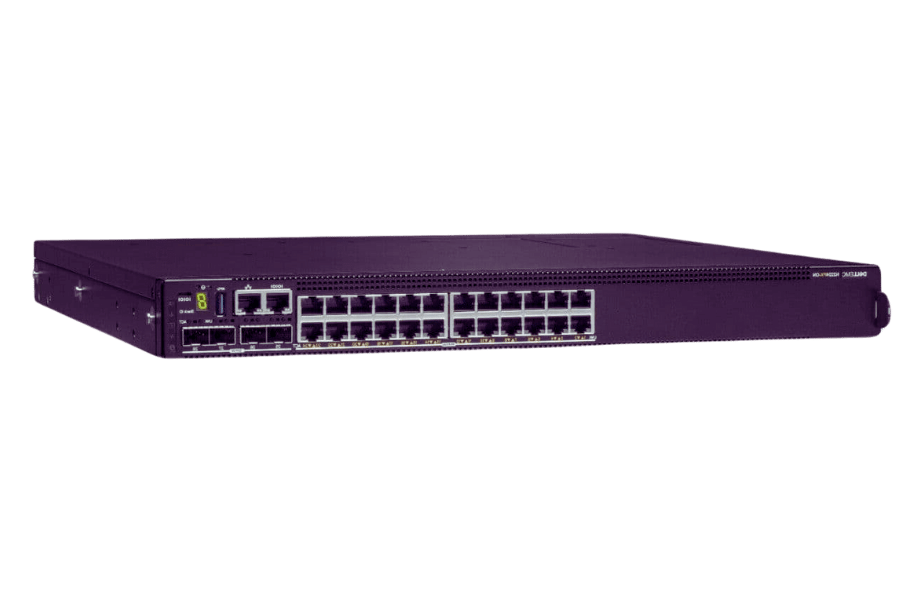
Determining the Necessary throughput and switching capacity
In order to determine the right SFP28 switch for your needs, you should consider three main things: network demands, future scalability and specific application requirements.
- With l3 switch configurations being implemented along with 100g capabilities, Network Demands have been changing quite fast.: Take stock of what is happening in your current network. Find out how much traffic is flowing through it at different times and what its peak loads are. Doing this will help you understand the minimum amount of throughput that must flow through it always if optimal performance is to be maintained throughout. You should also check up on the total bandwidth demand this places on your system so that necessary adjustments can be made accordingly.
- Future Scalability should also include adopting 25gb SFP28 modules and l3 switch configurations required by expanding network demands.: Always think about the future when making any decision concerning technology. Consider all possible scenarios where growth might occur within your organization’s infrastructure—particularly those involving higher speed connections or more advanced routing protocols like OSPFv3, which require larger MTUs than IPv6 and do not provide support yet (e.g., MPLS-TE). This means that it is important not only to select switches with sufficient capacities but also to have enough space to accommodate additional ones as well or stack them together where necessary.
- Application Requirements need to consider layer three functionalities integration and 25gb SFP28 modules, enhancing network future-proofing.: Different applications have different needs; therefore, there is no one-size-fits-all solution here. For example, video conferencing systems will require large amounts of bandwidth while cloud-based services may need high numbers IOPS rates per second; hence, depending on what kind of service(s) will be running across yours – this could mean going for bigger ports with more powerful processors supporting faster data transfer rates alongside additional features such Quality Of Service(QoS).
Evaluate these aspects carefully to find an SFP28 switch that will meet your network’s current and future demands for performance and reliability.
Considering 24-port versus Higher Port Densities
Consider a few key factors when choosing between a 24-port switch and one with higher port densities:
- Network Size and Scalability: A 24-port switch is usually good enough for small or medium-sized networks that are not expected to grow much. If you foresee expansion or increased demand, go for switches with at least 48 ports to avoid congestion and allow for easy scalability.
- Port Saving and Efficiency: A higher density of ports on a single switch might appear costly at first, but it can save you money in the long run. Such switches consolidate network infrastructure, hence reducing the number of devices needed and associated power consumption and cooling expenses, leading to more efficient operation with lower OPEX.
- Performance and Redundancy: Large networks or those with bandwidth-intensive applications would benefit from using high-density switches. These switches have a large switching capacity, which improves throughput. Additionally, these switches provide more options for creating backup links so that the network remains resilient throughout.
To ensure the efficient design of scalable systems with better performance while considering current needs and future growth projections, it is important to assess the number of ports required based on the existing network usage pattern, expected expansion plans, and application requirements.
Understanding Compatibility with Cisco and Other Brands
Compatibility is key when integrating networking equipment from different manufacturers, such as Cisco and others. Here are a few things to consider while ensuring seamless interoperability: the incorporation of 25 GB SFP28 modules, L3 switch configurations, and PoE solutions.
- Standards and Protocols Compliance: Networking devices from various brands must follow the same industry standards and protocols, such as Ethernet and IP, instituted by IEEE. Cisco has made its devices compliant with standards so that they can work with products made by other manufacturers.
- Firmware and Software Versions: It is important that all network devices run on compatible firmware and software versions. If this does not happen, there might be problems with compatibility or even reduced functionality caused by mismatched versions. Manufacturers usually give recommendations for updates and patches, which should be followed religiously to keep them interoperable.
- Vendor-Specific Features: Certain features or technologies that are considered proprietary may only exist in one brand, such as Cisco’s switches. Therefore, during integration, these functionalities might need to be disabled depending on the device being used so that everything can work smoothly across different systems.
To create an integrated multi-vendor network environment that is both efficient and effective, network administrators may document their systems according to these aspects and verify compatibility through certification programs or performance testing.
Troubleshooting Common Issues with the sfp28 switch

Addressing Connectivity Problems
To fix problems with the connection on the SFP28 switch, physical connections must be verified. Securely seat all the SFP28 transceivers and use appropriate cables for the connection type. After that, look through the switch configuration settings; wrong settings can be a reason for connectivity issues. Use diagnostic tools of switch for identification of port status and error messages. Also, check whether all firmware and software are up to date and do not have compatibility issues with other network devices. Then, the network topology for conflicts or loops, if any, will be reviewed, and performance monitoring tools across networks will be applied to identify the underlying problems that need resolution.
Dealing with malfunctioning SFP Modules
When it comes to broken SFP modules, you should follow this troubleshooting process:
- Look at the Physical Connections: Ascertain that the SFP module is correctly positioned in the switch’s port. Remove it and re-insert it to ensure proper contact.
- Inspect LEDs: These are located on the module itself and on its corresponding switch port, and they can be used for diagnosis purposes. If an LED is not active, there might be a hardware fault or inadequate seating; in 100g networks, lack of activity may also indicate a problem with 25gb SFP28 modules.
- Confirm Compatibility: Make sure that your switch model supports the type of SFP module being used. Some multi-vendor environments suffer from compatibility problems.
- Upgrade Firmware: The switch and SFP module should update their firmware to the latest versions. Failure to do so may prevent them from working together because some features become incompatible with older software releases.
- Try Known-Good Components: Replace the suspected faulty SFP module with another one that is known to be good. If this fails, too, then we know where the problem lies (module or port).
- Run Diagnostic Commands: Use diagnostic commands built into switches to check the status and errors associated with these modules.
- Updating older components to L3 switches and 25 GB SFP28 modules can greatly improve network performance: If none helps resolve the issue, replace the problematic unit with a new one not to compromise the entire system’s continuity.
An efficient way to fix these malfunctioning sfp modules is by following this troubleshooting process.
Enhancing Network redundancy and Stability
Maintaining continuous and dependable network services is essential to ensure network redundancy and stability in a 100g environment. The following are some methods of improving them:
- Use Duplicate Hardware: Creating backups for routers, switches, or power supplies guarantees there’s always an alternative when one fails. These hardware parts can also be configured for automatic failover, which ensures that the downtime is minimized within seconds.
- Redundant Paths Deployment: Developing different data paths within a network or making it redundant means having alternative routes through which information can travel. This helps to avoid single points of failure and stabilize links during disruptions.
- Implement High Availability Protocols: Hot Standby Router Protocol (HSRP) and Virtual Router Redundancy Protocol (VRRP), among other protocols, should be implemented because they create architectures with high availability. Multiple routers are used in such a case, hence providing backup paths that make networks more resilient.
- Link Aggregation Utilization: Link aggregation refers to combining several parallel network connections, thereby increasing bandwidth and fault tolerance provision. To achieve this, the Link Aggregation Control Protocol (LACP) can be employed so that traffic is distributed across multiple links. Even if one link fails, connectivity should still be maintained.
- Regular Backups and Fail-Over Testing: Failover mechanisms must not only work but should also be tested regularly alongside system backups, which need to occur frequently, lest data loss occur. It would, therefore, be prudent if these were implemented in any 100g network for better reliability since this will help recover faster during real failure events.
- Network Monitoring & Management: Continuous monitoring of networks using sophisticated tools for advanced management can quickly detect possible problems. Identifying and dealing with faults before they become major failures saves time and resources.
Through these methods, businesses can greatly improve their networks’ resilience, thereby guaranteeing that operations run smoothly without interruption while remaining dependable.
Case Study: Implementing sfp28 switch in a Pro AV Environment

Deployment in Pro AV and Netgear AV series m4350
In a Pro AV context using the Netgear AV Series M4350, when considering deploying SFP28 switches, it is vital to consider network architecture, performance requirements, and management capabilities, among other things.
The Netgear AV Series M4350 switches are built for low-latency Pro AV applications with high-bandwidth needs. This makes them perfect as they provide 10G and 25G Ethernet ports, which facilitate efficient data transmission when used in such areas. Moreover, these kinds of switches can greatly improve the performance of AV over IP systems by creating a reliable and scalable network infrastructure. Additionally, the M4350 series comes with advanced management tools designed specifically for AV applications, thereby allowing easy integration as well as simplified network management.
To optimize the distribution of AV streams within the system, proper VLAN segmentation should be ensured while utilizing multicast routing protocols so that bandwidth can be managed effectively where necessary, thus optimizing this feature’s utilization across different setups. Organizations should, therefore, plan their networks carefully considering M4350 switch configurations to achieve a strong and highly efficient Pro-AV environment required by today’s evolving Audio-Visual systems.
Real-world Usage Scenarios and Benefits
Pro AV environments can greatly benefit from the use of SFP28 switches such as the Netgear AV Series M4350. This implementation offers many advantages to enterprises and has practical applications in real-life settings. For example, during massive live shows, it may be used to ensure high-quality streaming with reduced latency rates. In this case, the hardware provides enough bandwidth stability for multiple video feeds and instantaneous content delivery required for flawless production.
Apart from that, broadcasting heavily depends on SFP28 switches due to their ability to enable efficient transmission of high-resolution video signals over IP networks. Broadcasting stations can utilize 10G and 25G Ethernet ports, which will help them maintain good-quality videos while optimizing their network infrastructure.
In corporate AV setups, these pieces of equipment enable advanced video conferencing systems, among other things; they provide robust connectivity solutions necessary for such setups. Secure handling of AV data within these environments is made possible through advanced management tools and the VLAN segmentation features offered by the M4350 series, thus improving overall system performance and user experience.
Educational institutions also greatly benefit from deploying SFP28 switches within their distance learning platforms. This ensures the smooth delivery of online classes alongside interactive multimedia content-sharing capabilities among learners situated at different locations worldwide simultaneously. Modern educational technologies have dynamic requirements that call for the high-throughput, low-latency features offered by these devices.
These are just some examples of how using different types of scenarios can lead organizations to higher levels of performance reliability and scalability, hence more efficiency in operations and higher satisfaction levels among users served.
Feedback from AV pros
What is the key here? Feedback from audio-visual industry professionals. This shows that they need SFP28 switches for their daily activities. Market leaders say these innovations have the unmatched performance and reliability necessary for good video and audio streaming. Such switches can easily adapt to complex AV setups due to high bandwidth support as well as low latency requirements. Additionally, with 10G and 25G Ethernet ports being flexible enough for use in any device or system; it enhances interoperability while future-proofing investments made towards AV infrastructure. According to testimonials on top websites about these types of switches, among other things, they are characterized by advanced management features together with VLAN segmentation capabilities, thus optimizing resource allocation besides improving network security, which makes them suitable even for those seeking strong AV solutions.
Reference Sources
Frequently Asked Questions (FAQs)
Q: What is an SFP28 25G Managed Switch?
A: An SFP28 25G managed switch is a network switch that supports Ethernet connectivity at 25Gbps and offers advanced management features like VLANs, QoS, etc. It can be applied to professional audio-video (Pro AV) environments with high bandwidth requirements and enterprise networks.
Q: What are the benefits of using a Cisco Catalyst 9300x switch?
A: Using Cisco Catalyst 9300x switches offers several advantages, including high performance, flexible uplink architecture, robust security features, support for Wi-Fi 6, and power over Ethernet through Cisco UPOE. The series is designed around Cisco StackWise® technology, which allows them to be stacked seamlessly.
Q: What is the difference between a 25G SFP28 transceiver and a QSFP28 transceiver?
A: One 25 G SFP28 transceiver can support a single connection supporting 25Gbps Ethernet. On the other hand, QSFP28 transceivers can aggregate four connections, each running at a speed of up to 25 Gbps, thus making the total aggregated capacity equal to 100 Gbps. Typically, QSFP28s are used in higher-density applications.
Q: Can the SFP28 25G Managed Switch be used in a Layer3 network?
A: Yes! The SFP28 25G Managed Switch works as both an aggregation or core-layer device in enterprise networks because it has routing capabilities that allow OSPF, BGP, and other static routes, which makes it possible for this switch to operate even at the layer three level.
Q: Are SFP28 25G Managed Switches stackable?
A: Yes! Stacking is supported on many models of SFPPC-managed switches, enabling multiple devices to be interconnected together, thereby creating one logical management entity with increased scalability and network availability during design implementation. So yes, this is possible. For example, the Cisco Catalyst 9300 series offers such features.
Q: How does IGMP Snooping help an SFP28 25G Managed Switch in Pro AV settings?
A: IGMP snooping on managed 25G SFP28 switches ensures effective multicast traffic management by restricting the flood of multicast traffic only to those ports that requested it, thereby optimizing bandwidth usage and reducing latency in professional audiovisual environments.
Q: What types of power supply can be used with 25G SFP28 switches?
A: Power supplies compatible with 25G SFP28 switches depend on the model and brand; Cisco Catalyst 9300 series switches have replaceable field power supplies that support AC and DC. Consult the product documentation or ask a reseller.
Q: How many uplink ports usually come with a 25G SFP28 Managed Switch?
A: A typical 25G SFP28 Managed Switch comes with multiple uplink ports, such as four (4) 25 Gigabit per second small form-factor pluggable (SFP28) uplinks for high-speed connections to core switches or other network devices, which enhance switch performance and flexibility.
Q: Can I buy an SFP28 25G Managed Switch from any reseller?
A: It is recommended that you buy from authorized resellers so that you can get genuine products with limited lifetime hardware warranties and access support services; for instance, Netgear-approved resellers offer authentic items backed by this warranty.
Q: Are there any warranties on the 25Gbps SFP-28 Managed Switches?
A: Yes, most manufacturers provide limited lifetime hardware warranties for their products like these. For example, Cisco® Catalyst® 9300 series switches come with one such warranty that lasts forever—this gives peace of mind and shows commitment to supporting your investment over time.
Related Products:
-
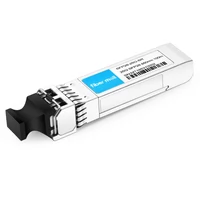 SFP28-25G-SR 25G SFP28 SR 850nm 100m LC MMF DDM Transceiver Module
$25.00
SFP28-25G-SR 25G SFP28 SR 850nm 100m LC MMF DDM Transceiver Module
$25.00
-
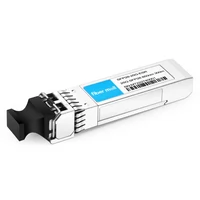 SFP28-25G-ESR 25G SFP28 ESR 850nm OM3 200m/OM4 300m LC MMF DDM Transceiver Module
$35.00
SFP28-25G-ESR 25G SFP28 ESR 850nm OM3 200m/OM4 300m LC MMF DDM Transceiver Module
$35.00
-
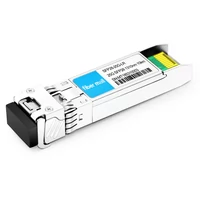 SFP28-25G-LR 25G SFP28 LR 1310nm 10km LC SMF DDM Transceiver Module
$45.00
SFP28-25G-LR 25G SFP28 LR 1310nm 10km LC SMF DDM Transceiver Module
$45.00
-
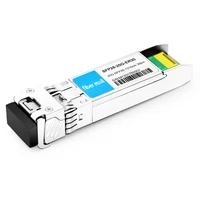 SFP28-25G-ER30 25G SFP28 ER Lite 1310nm 30km LC SMF DDM Transceiver Module
$165.00
SFP28-25G-ER30 25G SFP28 ER Lite 1310nm 30km LC SMF DDM Transceiver Module
$165.00
-
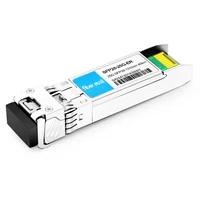 SFP28-25G-ER 25G SFP28 ER 1310nm 40km LC SMF DDM Transceiver Module
$300.00
SFP28-25G-ER 25G SFP28 ER 1310nm 40km LC SMF DDM Transceiver Module
$300.00
-
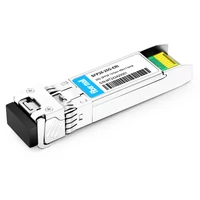 SFP28-25G-ERI 25G SFP28 ER 1310nm 40km LC SMF DDM I-temp Transceiver Module
$360.00
SFP28-25G-ERI 25G SFP28 ER 1310nm 40km LC SMF DDM I-temp Transceiver Module
$360.00
